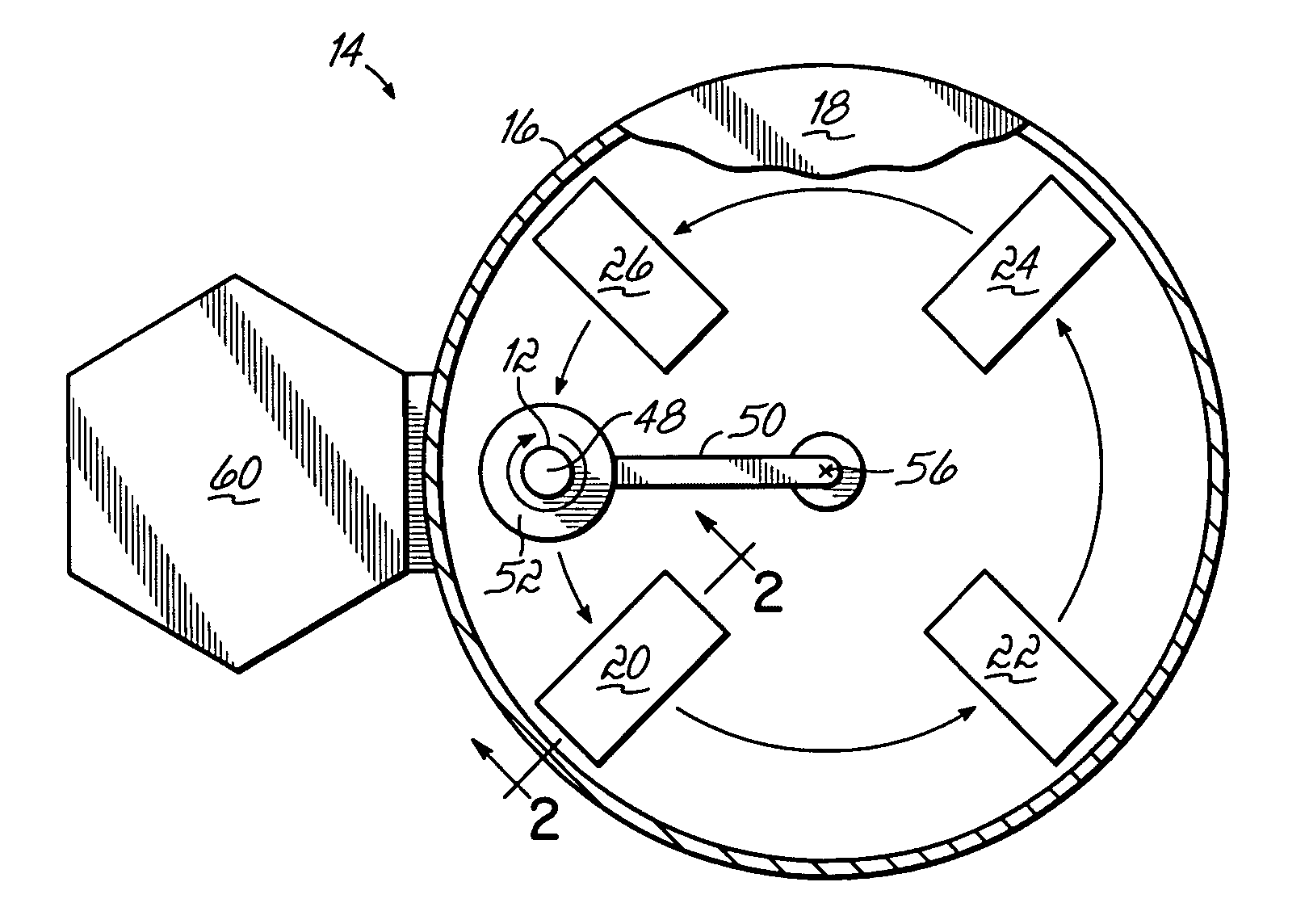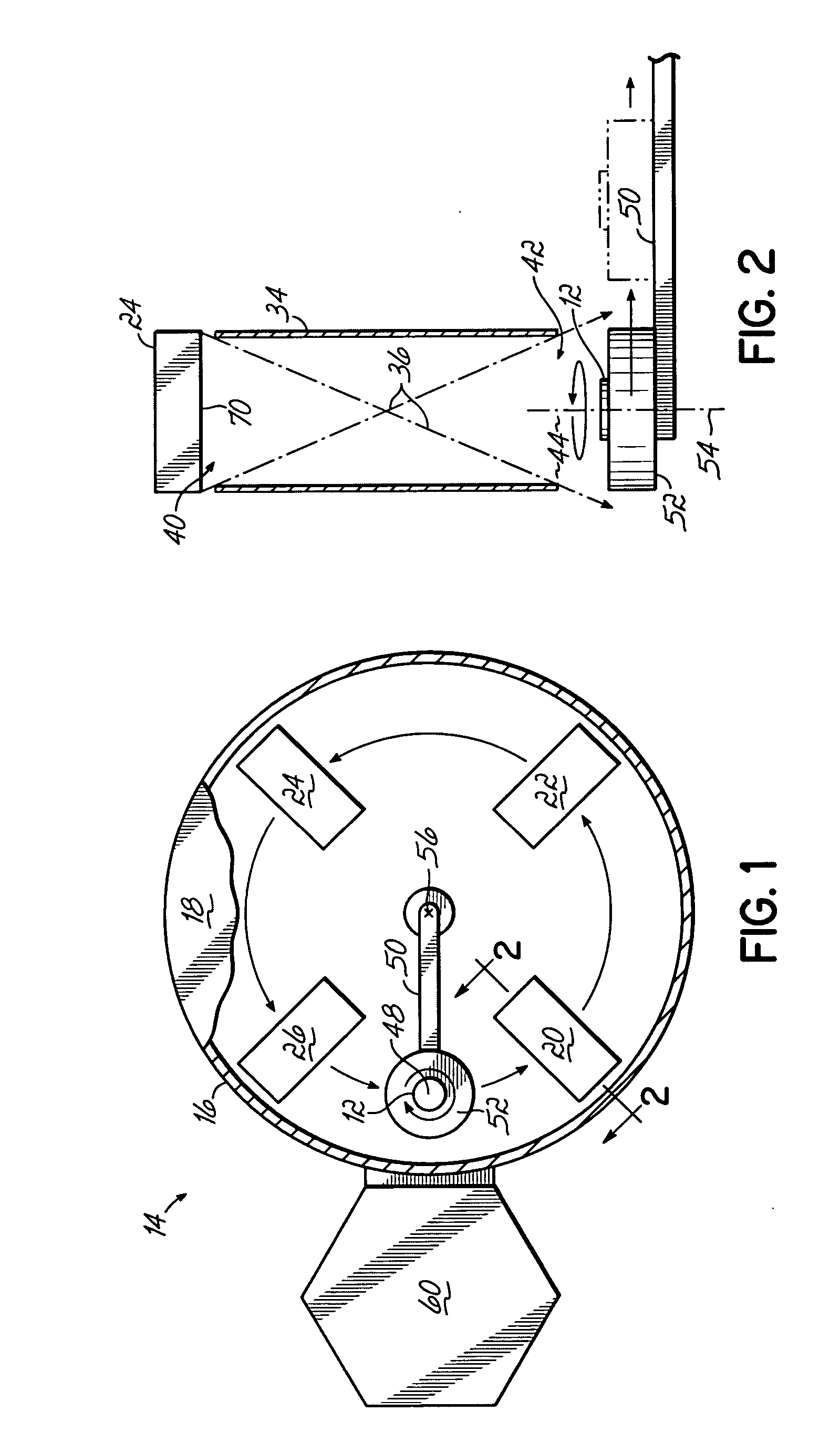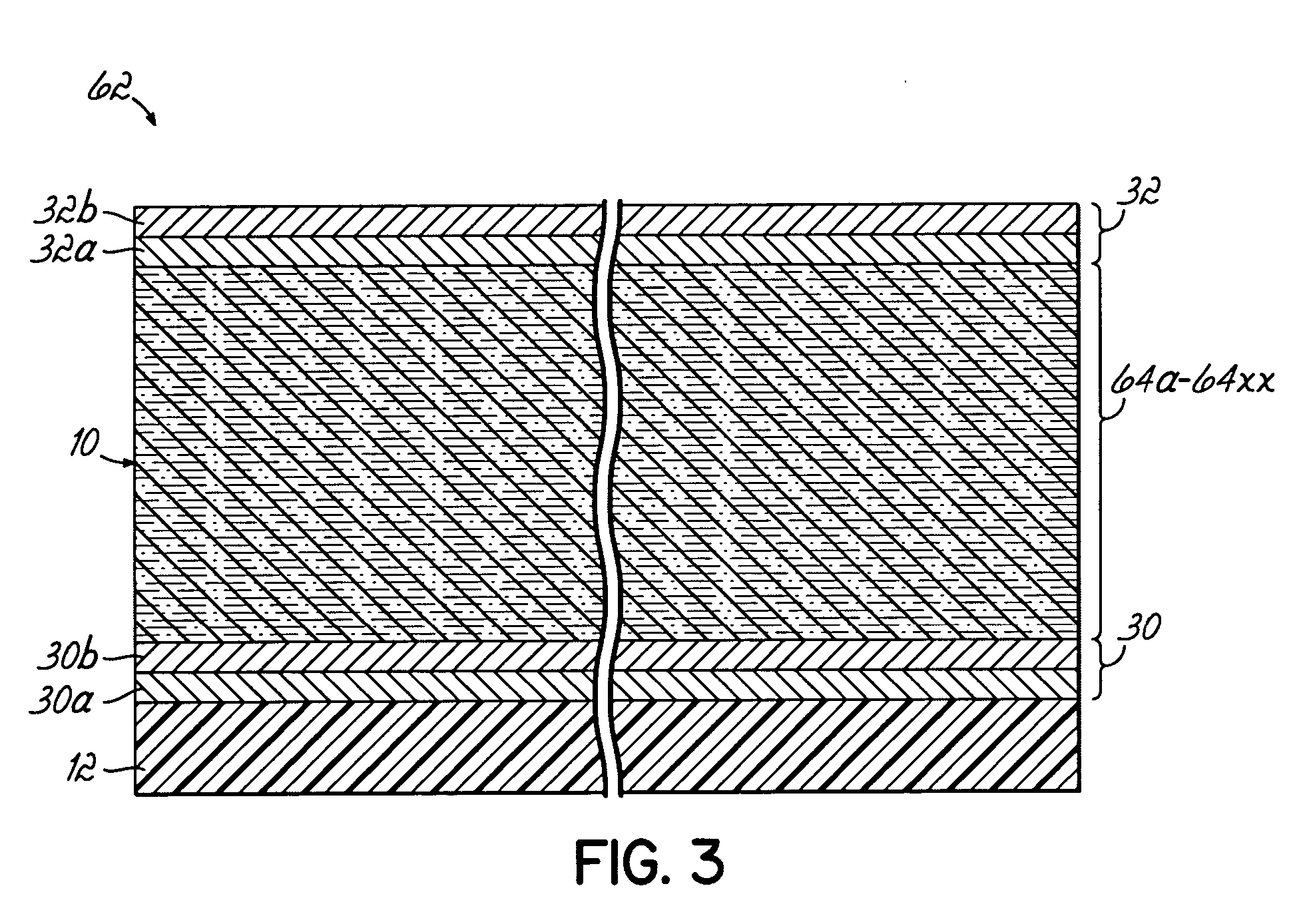Method of sputter depositing an alloy on a substrate
a technology of sputter and substrate, applied in the field of physical vapor deposition, can solve the problems of different magnetic materials, inability to mix layers, and inability to deposition tools and techniques, and achieve the effect of overcompensating cost disadvantages
- Summary
- Abstract
- Description
- Claims
- Application Information
AI Technical Summary
Benefits of technology
Problems solved by technology
Method used
Image
Examples
Embodiment Construction
[0021] In accordance with an embodiment of the invention, as best shown in FIGS. 1-3, a method of sputter depositing an alloy 10 on a substrate 12 by planetary sputter deposition techniques includes providing a PVD module, or apparatus 14, having a vacuum chamber 16 and a chamber lid 18 (shown in partial) defining an evacuable or controlled atmosphere volume. The vacuum chamber 16 is provided with four targets 20, 22, 24 and 26. However, it is contemplated that the chamber 16 may hold up to about ten targets or more. The Nexus PVD-10 planetary process module available from Veeco Instruments, Inc. of Woodbury, N.Y., which is adapted to hold up to ten source targets, is one suitable type apparatus 14 for sputter depositing the alloy 10 on the substrate 12 in accordance with the method of the present invention. In addition, U.S. Pat. No. 5,795,448, which is hereby incorporated by reference herein in its entirety, describes the general operation of planetary process modules or devices. ...
PUM
| Property | Measurement | Unit |
|---|---|---|
| Fraction | aaaaa | aaaaa |
| Fraction | aaaaa | aaaaa |
| Fraction | aaaaa | aaaaa |
Abstract
Description
Claims
Application Information
 Login to View More
Login to View More - R&D
- Intellectual Property
- Life Sciences
- Materials
- Tech Scout
- Unparalleled Data Quality
- Higher Quality Content
- 60% Fewer Hallucinations
Browse by: Latest US Patents, China's latest patents, Technical Efficacy Thesaurus, Application Domain, Technology Topic, Popular Technical Reports.
© 2025 PatSnap. All rights reserved.Legal|Privacy policy|Modern Slavery Act Transparency Statement|Sitemap|About US| Contact US: help@patsnap.com



